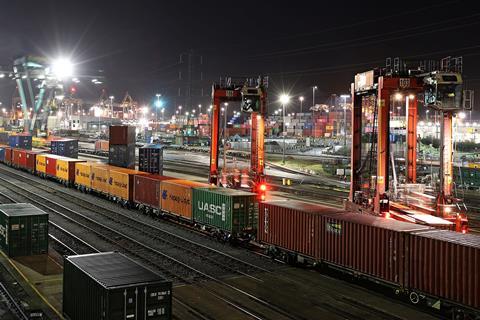Modal Shift Programme incentivises switch from road to rail
DP World has announced a significant increase in the share of freight being transported by rail from its Southampton logistics hub.

The port operator’s Modal Shift Programme trial, introduced last September, is designed to increase the attractiveness of intermodal rail for customers through carefully considered financial incentives.
From September to February the share of freight units being moved by rail instead of road at DP World Southampton has increased by two-thirds, from 21 per cent to 35 per cent.
The company said the increase has been supported by the introduction of four new train services from the terminal to Cardiff, East Midlands Gateway, Hams Hall and Doncaster respectively.
Since the beginning of the programme, DP World noted that its customers and supply chain partners have saved approximately 4,500 additional tonnes of carbon dioxide by choosing rail over road - the equivalent of 13,500 lorry journeys. That is more than the total emissions of DP World Southampton’s operations.
Customers are currently being offered an £80 financial incentive if they move import-laden containers via rail to a railhead within 140 miles of the logistics hub. Without this incentive, which is financed by a small charge on all import-laden containers, freight moved within this range would normally travel via road haulage.
John Trenchard, vice president UK commercial and supply chain at DP World, said: “We believe that our Modal Shift Programme at Southampton has allowed our customers to explore how rail can be effectively utilised to achieve lower carbon international supply chains serving the UK economy.
“At a time when the pressure to manage costs, maintain reliability and improve speed has never been greater, providing our customers with the right services and incentives to help them unlock better ways to move cargo is of paramount importance.
“We are continually engaging with the market to strengthen this service, so we look forward to providing our customers with new options to meet their decarbonisation goals.”



